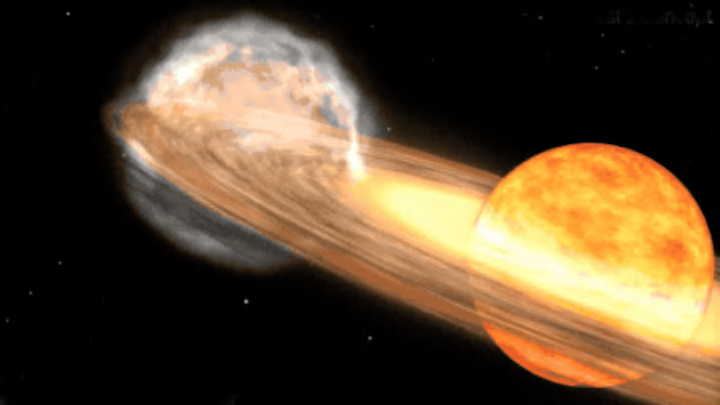If you missed the total solar eclipse earlier in April, you don’t have to wait long to witness another once-in-a-lifetime celestial event. According to NASA, the star system T Coronae Borealis, or T CrB, is due to explode at some point this year. Once it does, the recurring nova will be visible to the naked eye for the first time in 80 years.
T CrB consists of two stars: a white dwarf and a red giant. As the pressure and temperature of the red giant ramps up, it becomes unstable and sheds its outer layers. The white dwarf absorbs this refuse on its surface until it grows hot enough to trigger a runaway thermonuclear reaction. When this happens, the brightness of the star system increases from magnitude +10 to magnitude +2 (the lower positive number means the star is brighter). At its peak, T CrB will be as visible in the night sky as the North Star.
The binary system explodes every 80 years or so, with the last time being in 1946. At least that’s how it appears from Earth; T CrB sits about 3000 light years away, so the upcoming nova actually happened millennia ago. When the star “explodes” it doesn’t self-destruct, which explains how the event is able to reoccur every eight decades. A supernova, on the other hand, describes the catastrophic explosion at the end of a star’s life cycle.
While NASA can’t predict the phenomenon down to the day, they anticipate it arriving some time between now and September 2024. There’s no need to keep your eyes trained on the skies until then; once the nova is visible to the unaided eye, it will stay that way for several days. If you’re viewing it through binoculars, you’ll be able to see the outburst every night for over a week.
If you’re looking for something to do in the meantime, learn to identify the constellation Corona Borealis in the night sky. Also known as the Northern Crown, this half-circle of stars between Boötes and Hercules is where the spectacle is set to take place.
